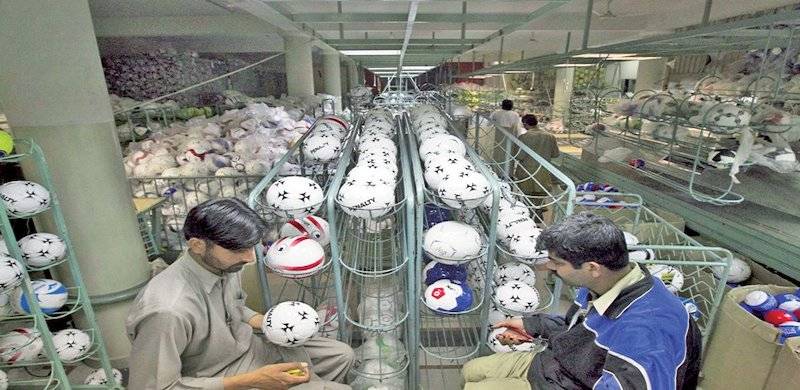
The global financial crisis of 2008–2009 has considerably affected the world’s supply of exports. Due to decreasing demand in the world market, Pakistani exports of textiles and household items also witnessed a negative growth during 2010.
From 2011 onward, oil prices increased, and this affected the balance of trade. Deterioration in terms of trade along with a surge in oil prices had a severe repercussion on the value of exports, particularly cotton and textiles. Due to this, their value remains comparatively lower, although the number of export products has increased.
According to the Economic Survey of Pakistan 2016-17, the reason behind the decline in our sports goods’ exports were the non-favorable prices for our exports in the foreign market. Hence sports goods’ such as our football decreased during 2015-16.
The main reason behind the decrease in our export of textile and sports goods during 2014, 2015, 2016 and 2017 was the overvaluation of the rupee against the dollar. Exchange rate volatility has negatively affected the volume of Pakistan’s exports, especially textile products.
Other regional competitors in these markets depreciated their currencies against the dollar: Sri Lanka (14.4%), India (9%), and Bangladesh (4%). Hence they benefited from the lower value of their exports in the foreign market, while Pakistan maintained its currency and overvalued during this period. As a result, export product prices were higher and hence export growth was negative, particularly in textile and sports products (Ahmed et al. 2017).
Certain measures taken by the government in 2017, such as ensuring supply of Liquefied Natural Gas (LNG) and lowering interest rates, positively impacted export of textiles, sports goods, and household products. These were expected to grow in 2018. But during the last quarter of 2019 and all of 2020, the export sector faced a severe brunt due to lockdowns all over the world.
Only exports of the textile sector under division 26 showed positive growth, other goods such as sports goods and engineering goods showed negative growth. Despite COVID-19, positive growth is attributed to its consistent demand in the foreign market.
Another reason behind the stagnant growth in our textile exports during 2015 and 2016 is lower demand from the US, a big market for Pakistan textile products. However, their demand increased during the next years and our export of textiles showed positive growth.
Moreover, the unit price of Pakistan is higher as compared to its competitors in the regional market. The unit prices of China, Bangladesh, and Vietnam decreased during 2015, 2016 and 2017, while Pakistan’s unit prices have increased during this period (Shahan Arshad 2018).
China, one of the biggest markets for Pakistan’s cotton exports, has decreased its imports during 2014, which hurt Pakistan’s cotton exports in value terms. Furthermore, the European Union (EU) is also a big market for our exports, particularly of textile products. In 2014, the EU gave Pakistan a GSP+ status due to which our exports to the EU increased. However, because of the crisis in EU countries during 2015 and 2016, our textiles’ then decreased.
Another reason our exports to the EU decreased is because the EU currency depreciated against the dollar during 2015 and 2016. However, the overall export volume in 2020 as compared to 2009 increased manifold.
How We Can Stabilize Our Exports
Our exports to other countries are shallow and need product diversification. The quality of our goods for these markets is not consistent. We have a very weak and at times non-existent quality check, and checks & balance system at the local level. The government should focus on this issue to ensure quality.
The government must ensure a consistent power supply to the exporting sector at a lower cost. Our export sector cannot fulfill the timely demand of the foreign markets due to a shortage of power supply. Due to stringent competition in the regional markets, Pakistan is faced with higher costs and an inconsistent supply of power in its export sector.
Installation of advanced technology along with skilled labour is urgently needed for Pakistan’s export sector. The government should focus on research and innovation in the export sector.

